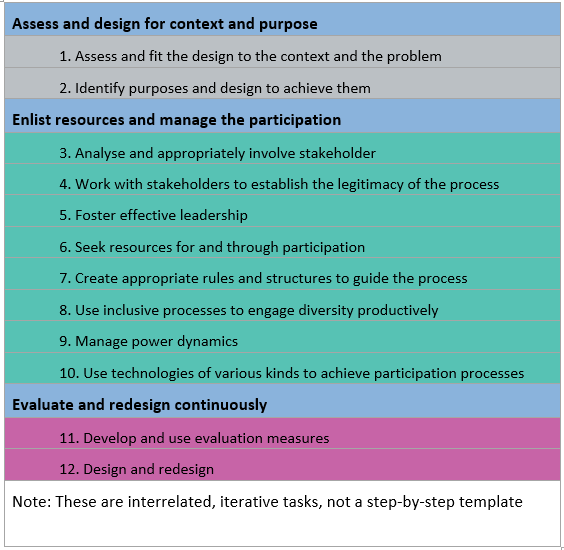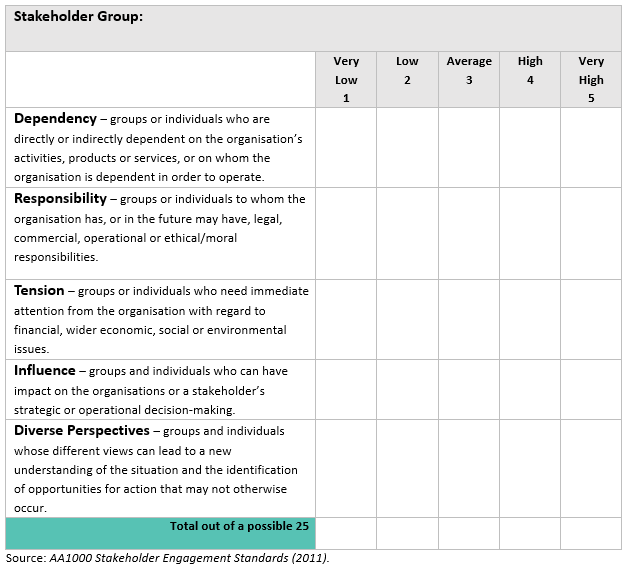Module 2: Diagnosis, Identifying capabilities, resources and processes
Topic 2.3: Stakeholder and Client Analysis
Having briefly explored the means by which organisations communicate their business models and processes, and then implemented systems to keep members focussed on, and rewarded for, delivering organisational outcomes, we turn to those who have influence in the systems and contexts in which these entities operate. Government agencies typically have effective stakeholder engagement guidelines in place.
Stakeholders provide vital information for assessing the internal and external environment, thus contributing to a SWOT analysis. They provide information on the market, potential strengths and weaknesses and often see opportunities and threats from a fresh perspective. Stakeholders include people, organisations or groups with an interest or stake in the line of business.
Bryson et al (2012)[1] add to conventional notions of stakeholder engagement and management, by exploring public participation as an avenue of stakeholder strategy. Their paper provides a useful outline to developing Design Guidelines for Public Participation (see Table 2.2 below), and outlines for the purposes of public participation. This reading is important in that it argues for a structured and effective public participation process, thus broadening the mechanism by which agencies and departments would include those with an interest in the project or initiative.
Required
35 mins
Reflect on the key elements of Bobbio’s paper and the design of participatory processes and the different kind of results that they can entail.
You could start with thinking about the three kinds of motivations that can push policymakers toward participation: empowerment, legitimacy and learning.
- How critical is it to develop an ongoing public participation process in your agency?
- What value does it add?
- What are your current processes?
- How effective are they?
- How do they add to the value you deliver?
Use Table 2 from the Bryson et al reading and Table 2.2 below to guide you in developing a Public and Stakeholder Participation process for your Workplace Project.
Table 2.2 Design Guidelines for Public Participation
Required
60 mins
Preparation for the Workshop
Brainstorm a list of Stakeholders who have an interest in or who might be impacted by your proposed changes. You will use this list when you apply the various tools.
Bring your list of stakeholders to the workshop.
You were introduced to a Stakeholder analysis tool in GSZ633 Managing Outwards in a Networked Environment (Table 2.3) to identify the likely overall influence that the stakeholder group may have. Rank the various factors. Click here to download the tool.
- What does this tell you about the various stakeholders?
- Which are crucial?
Revise the stakeholder analysis you completed in GSZ633 Managing Outwards in a Networked Government, or if you did not undertake GSZ633 complete Table 2.3 above with one of your major stakeholders in mind.
- Decide overall which key stakeholders have power and influence. Why?
Answer the questions below using the various analysis tools, and any tools that are currently used in your organisation. Also think about how your current tools, and any you have explored here, that may work together to reveal any additional insights. What techniques and approaches might you apply?
- Why does this stakeholder group affect our organisation on behalf of whom?
- What are the desires of key individuals in the stakeholders group?
- How does this stakeholder group affect our organisation?
- How powerful is this stakeholder group? What gives them this power?
- What factors might affect that power in the future?
- Bryson, J., Quick, K., Schively Slotterback, C. & Crosby, B. (2012). Designing Public Participation Processes. Public Administration Review, 73(1), 23 – 34. ↵



